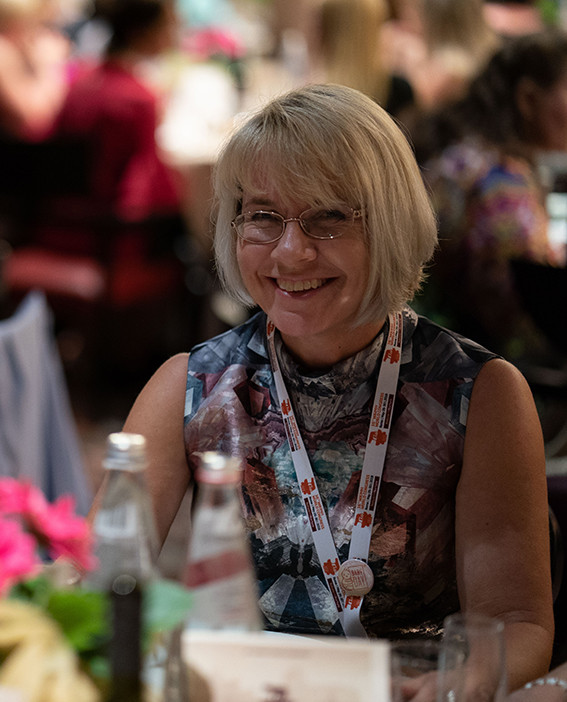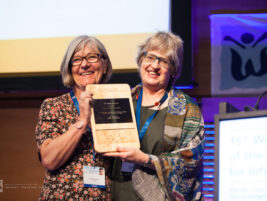A few months ago I was travelling back home to Tampere from Helsinki by train after a workday filled with meetings. The train was one of the late afternoon trains crowded with people commuting daily between the two cities. I sat in the middle row opposite a young mother with a 10-11 month-old baby boy. The mother put her smartphone in front of the baby and without a word opened a video for him to watch. The boy was immediately caught up by the video, smiled at it and vocalized cheerily. The mother monitored what her baby was doing with the phone, but stayed completely silent as if avoiding engaging him in any way. After having observed this for about 10 minutes I started to feel uncomfortable and wondered in my mind if I should say something to the mother about the importance of interacting with the baby. It struck me that I was seeing in a real live situation another way of how the smartphones may hamper infants’ language and social development by limiting social interaction between them and their caregivers to practically nothing. After another few minutes however, the baby started squirming, looked away from the phone, and cooed to his mommy who then answered with a very soft and warm voice. For the rest of their one-hour journey the mother played with her little son and tried to keep him as quiet as possible so as not to disturb the other, weary travelers. Feeling happy and relieved having seen this beautiful mother-infant interaction I realized that the smartphone and video were in fact this mother’s way of keeping the son quietly occupied for a while.
A few weeks later I witnessed how our son-in-law used a child´s online TV program to calm down his two-year-old son when he was having an upper respiratory infection and was not supposed to run around. The father asked his little son to come and watch a program where different colored cars, tractors or dinosaurs come from boxes and end up in other boxes to change color. The program in itself would not have done any good for the little guy’s language acquisition or social skills, but having a conversation with his daddy about what was happening in the TV did change the whole situation to a good learning experience and kept him resting according to doctor’s orders.
These two examples illustrate what we might advise parents of very young children about smart devices and their use. Just like TV in earlier days, the gadgets and technology in and of themselves are not just “evil” or “good.” What matters is how we use the technology available to us and to our children in a way that is beneficial instead of harmful. For those of us working within the field of Infant Mental Health, it may be obvious that ordinary social interaction, such as talking with each other, carrying out daily tasks, playing and showing love and appreciation towards one another, is the best way to support healthy child development. Parents or caregivers who are not so familiar with the importance of ordinary interactions as related to optimal growth and change in infancy and early childhood, may be especially excited about new gadgets and programs that promise to “make your child develop faster, better and be more successful.” Perhaps the key is to achieve a balance between the ordinary tasks or activities of family life and the intrigue about using new technology. Maybe we should encourage parents to act like the parents in the little vignettes: use smart devices and technology when it is helpful and always add the aspect of human interaction when possible. With younger children, parents may limit screen time so that there is enough time for ordinary activities, and also make sure that they have the possibility of interacting with their child during the child’s screen time. With older children, adding the human interaction to video games and screen time may mean talking with the child about his activities and showing interest in them, in addition to monitoring the amount of time spent with the electronic gadgets.
We might also remind parents or other caregivers to avoid what could be called “toxic use” of smart devices, i.e. parents getting so immersed in the smartphone, tablet or computer that the child gets forgotten. An example of how to prevent the “toxic use” is the ad that the Finnish Police posted in social media this summer. In the post they ask parents with children not to use their smart phones on the beach, but to supervise their children instead so that they would be safe from drowning.
I think what I am trying to encourage us all to do is to find the best ways to use the amazing technology of our times to the benefit of all parents and young children. I myself have been working for several years trying to develop digitalized health care services for families with infants and young children. Last week we started piloting our first treatment program called “Parental Coaching” with four families. We did not forget the human interaction component! Each family has a coach who follows their progress during the eight-week program and keeps contact with them at least weekly. This summer I will also be working with a 360-degree camera, virtual glasses and a gaming computer: my new tools that I hope will create new possibilities for helpful interventions with parents and young children.
Authors
Kaija Puura, WAIMH Executive Director








